Experience-Seeds-Knowledge-Plant Discoveries-Ecological Enrichment-Join Now Click Here!

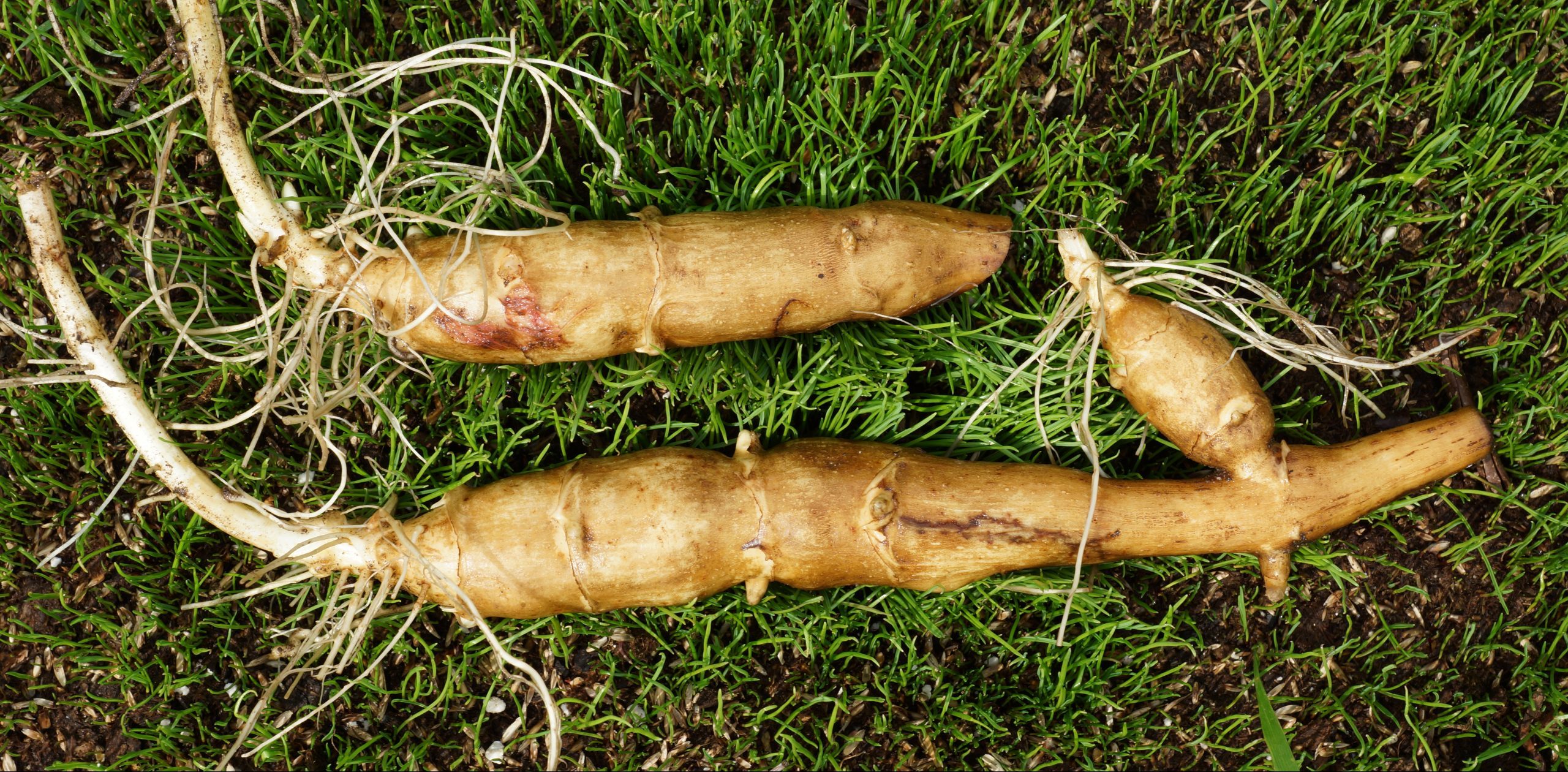
“Ken, no one cares about your snooty little fruit club.”
It started as a discussion around wild leeks as a foraging exercise at my farm. Here was a delicious wild food that was being harvested for use in upscale restaurants. I had a small planting under my persimmons at my farm planted about a decade before. They were slowly spreading outward. After a few years of tending them it made me realize the forests I would drive by on the way to my farm contained centuries worth of ramps. Some areas were just solid ramps in big colonies. My thought was centered on how it should and could be cultivated. The bulbs were rather expensive. 60.00 per pound or more. I would purchase them to resell from a grower who cultivated them from seed and cuttings. He had figured out a formula for wild growing them sustainably in his forests. The US Forest Service took an interest and was learning from him on the details of doing this type of cultivation. It was a half wild half farming type of cultivation. The idea was to create a crop with a turnover greater than ginseng and not as finicky. A few articles pointed out some of the loss of this plant. The high price was making it profitable for this type of pouching on public land. We kept discussing the rather limited understanding and use of wild leeks. It was considered more of a wild food than anything else. This was before you could actually buy them on line or see them shrink wrapped at a local food co-op. I was thinking how delicious and valuable they are. I wondered why more wild fruits and vegetables are not harvested and used the same way. I wondered how I could grow that movement either at my farm or elsewhere while at the same time cultivate the wild plants in some manner. It was his statement, ‘no one is interested in your snooty little fruits’ reflects this sort of exclusivity. It was funny. One of my office employees then mentioned recently that someone had told her on the phone that I was the nut messiah. At that point everyone in the barn was laughing. I mean who doesn’t want to be the messiah of the snooty little fruit club?
For me the goal was to create an atmosphere of comfortability with an unknown crop and to make it known on a broader scale. It was my catalog that allowed me to indulge in my fruit ‘snootiness’ if you will while making these plants accessible and NOT exclusive. Everyone should grow and know them. Fruits like the Michigan sand cherries that dot the coasts of the Great Lakes, all things Amelanchier as well as wild apples, autumn olive and perennial husk tomatoes that also are in abundance throughout the state but little noticed or used. I never really grew anything as wildlife food but of course much of this ‘wild edible’ is used by wildlife. This idea along with my philosophy of come one come all with long plant descriptions pushed the limits of my catalog production prior to the internet. At the time print and mailing was much cheaper than it is today. Today this has gone online and you will more likely to find this within the different Facebook groups on all the different genera of fruit, nuts and edible foods. In general people have made changes to end exclusivity and the so called ‘snootiness’ factor. This means anyone can enjoy the fruit or grow the fruit and share their knowledge freely with others. Some things are still shrouded in mystery though. Some folks do have strong opinions still and the admins of these groups are busy at times.
In the retail nursery trade, it is another story altogether. You can introduce any fruit, nut or perennial vegetable almost immediately. The question is why and what is the point of it all?
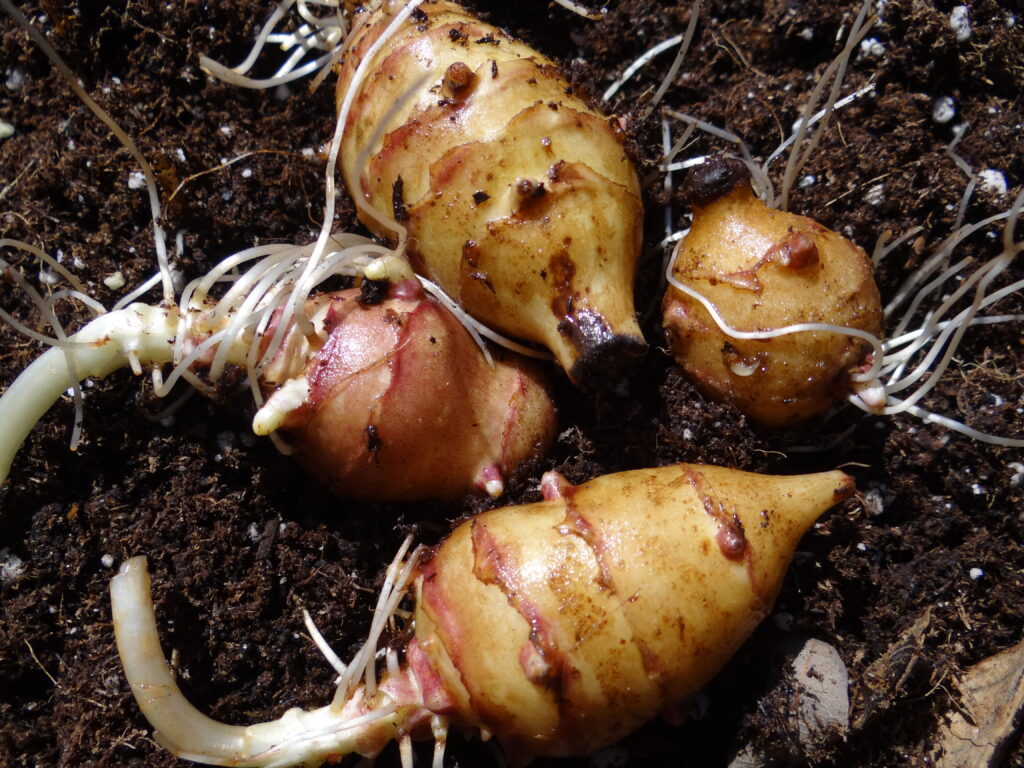
Case in Point: The Jerusalem Artichoke
There never has been such a widely distributed edible food plant than the sunchoke. It also appears to set a record for a food plant that has never caught on to the general public. In the book, Food Plants of the World: An Illustrated Guide by Ben-Erik van Wyk there is Chinese, French, German, Italian, Japanese and Spanish names for this perennial sunflower throughout the world. It was in Europe by the sixteenth century. It has high levels of potassium and phosphorous but low in overall energy yields. I remember finding out there were many varieties of them yet only two or three were in any sort of production for gardeners. I had the thought why not change that in a way to make the sunchoke a common vegetable usable and enjoyed by all. Its a good goal but one that was not easily obtained. To top it off, many have come before me in this quest. At a couple of points in history, Jerusalem artichoke was also considered an energy crop for bioethanol. This thing has been up the flag pole for good ideas gone bad too. It is a wild crop.
It turns out that more misinformation is on line about the sunchoke than any plant I have ever researched. My daughter as well as some of my office staff helped me in this great educational process finding information about this unique tuber crop. Due to its long history of use in North America everyone has there own take on it. Ironically it was never a large part of the diet of those Native American tribes blessed with its presence. You can read about this in Native American Ethnobotany by Daniel E. Moerman. On page 259 this listing provides us with a window of how this mostly uncultivated tuber crop was a food historically used as a famine food and more. This value included the stems, leaves and flowers too but it was not like the potato of the plains most of us would like to think it would be. It was really more of a survival food and not cultivated. Each tribe was different in its use of the plant too. It was kept nearby in some sort of cultivation by some. It is said that the Stampede variety was one of these selections. But here is the kicker. You can’t store it and its harvest window is limited to fall and winter. It is likely the indigestion part played a role too because you see the side effect of digestibility; flatulence listed in the Moerman book too. All human digestive tracks cannot handle large amounts of sunchokes. You could build up to a certain tolerance but it would have to be repeated every year when you started consuming the inulin rich tubers. Roughly about an ounce is enough to cause flatulence and for some people it can be cause bloating and discomfort to the point they are unable to eat even a little. With todays food processing techniques people have found a certain wiggle room either through fermentation or cooking to minimize the indigestible part of the tuber. Some people seem to have minimal issues with digestion. A farmer friend of mine who is a diabetic eats them instead of potatoes. He told me he has limits with them and so does his non-diabetic wife.
In the process of doing this type of breeding and collecting over the course of twenty years I soon had THE LARGEST WORKING SUNCHOKE COLLECTION IN THE WORLD. I know I am over stating this. It probably is not entirely true. It just felt like that. As one customer told me, you have more sunchokes than you can shake a stick at far greater than anyone else. “Don’t be shy about that,” she said. In some ways, I started the Snooty Little Tuber Club. Or if you will The Snooty Little Boofer Club due to its indigestibility.

Here was the problem. No matter who I talked to, the Jerusalem artichoke was not considered the most valuable food plant high on a list of must eat. It was considered more of an adjunct to a diet of a wild foods. Some people felt they were too invasive. Some people felt they were too tasteless or had this off flavor. Some people felt they were not really native and the ones I had in particular were not native. One person felt I was hawking the wild and was hatching a get rich scheme via mail order. Several people thought I should put warnings of flatulence on the labels like cigarettes have for cancer. I did think of some good one liners for that. A kind of sphincter alert I guess. Comedy aside, 99 percent were on board with my obsession so I went ahead. One year I grew roughly a thousand seedlings in my polyhouse in 2 1/2 inch by 5 1/2 inch forestry triangle shaped peat pots. That was quite time and money consuming at the time. The hard part was producing real seed prior to this grow out.
Start with Seed and Go From There
There is no place to buy sunchoke seed. Only the tubers are for sale. In general, sunchokes are very close to being sterile. I remember once collecting a grocery bag full of Stampede seed heads only to find out I had all blanks. To find a way around this problem, I began using wild selections found near my farm and new varieties I purchased like the Clearwater and White Fuseau to set seed in quantity. Finally I had enough clones that seed set was no longer an issue. This brought in the gold finches. They were are the alarm bells to cover the heads with screens. Even the chipmunks and white-footed mice took notice. It is here the on line articles about sunchoke sterility, etc. were completely misleading. In the meantime, I was generating a lot of seeds. Some varieties had completely full seed heads just like sunflowers. Going from blanks to full heads was quite a break through for me. To do a test I would take a pair of pruners and cut through a seed head. One year the Clearwater was packed full of large seeds. I was blown away when I found that.
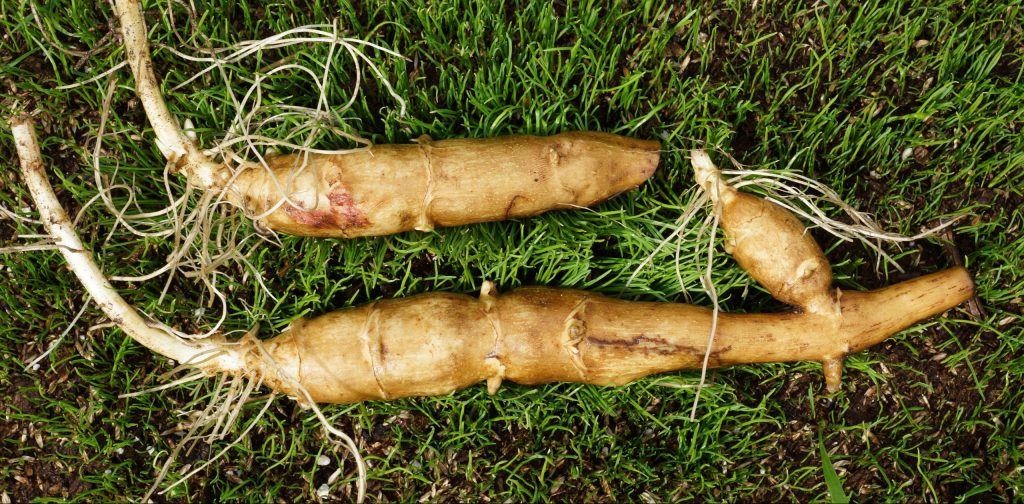
As time went on, I kept my collection intact by using repellants to prevent consumption by deer and groundhogs. Things like Deer Off and Animal Off which combine the rotting egg smell along with rosemary oil. I made my own with fish emulsion and garlic oil too. It worked one hundred percent of five percent of the time! I use to stop at the store on the way home from the farm. I once heard in line, ‘who died?”. I stopped going to the store after that. I was wearing ‘Shopper Off”. I stored my shoes outside often. Bringing them into the house was not cool. One cat in particular had found them appealing and I think began peeing on my shoes at night. I know. Brutal kitty.
Some of my seedling selections like Shiawassee were found in ditches along the roads but most I purchased or exchanged with other collectors and growers. Even roadside sunchokes are not particularly easy to get but once I did stop off I-94 and dug one wild form that I had been driving by for the past decade. It was likely ‘strummosus’. It was in an area heavily bulldozed. Stopping off the highway today is not good. I heard not too long ago of a truck driver getting fined for harvesting wild asparagus. It has to be an emergency to stop. I need asparagus is not an emergency. The police are not going to buy your story. I need to introduce the Euell Gibbons Law allowing people to stalk wild asparagus. I had read in my local paper many years earlier that a woman use to drive the back county roads and find sunchokes, collect and eat them. Unfortunately those same roadsides today are filled with toxic herbicides wiping out most of these plantings as well as other perennial wild flowers. I could see the change as I was a frequent runner as well bicycler along these same roads. I still see some colonies of them often hidden under or near other vegetation protected from the herbicidal maniacs.
The selections I created were eventually winnowed down to two groups. One was for small to medium size with clean skins with no knobs and mild flavor. They were meant for culinary use with ease of harvest and preparation for cooking. Group two was the opposite. They were wiry long skinny tubers with little flesh. They were the rhizome types that could compete with other vegetation as well as browsing from animals to some extent. I did find some types of seedlings with very uniform growth habit and clump forming tubers too much like an earlier type called Dwarf Sunray. The on line sources on Ebay, Etsy or Amazon often had no idea what variety they were selling and nor did they care. I noticed there were two types of Stampede for instance. For that reason, I rarely grew someone else’s variety unless it was more or less public domain. Yes. I went super snooty! There was one variety I had to pitch due to objections from the person who discovered it. This variety is now gone forever as the owner also lost it. This is a common experience within sunchoke owners. You need a certain propagate or die mentality or the variety will likely disappear forever and usually much sooner than you think. This is because both the foliage and tuber are delicious to many animals. I did find a source for some of the best varieties in Europe. Some of these were well tended and used because the person making the collection went to great lengths to insure purity of the cultivars. There is a bit of cult following with the sunchoke folks. One guy sent me a photo of twenty pounds of them in his freezer cubed and ready to eat during winter. I like them too but normally consume them only in the spring with my rice and beans in a rice cooker. They were my survival food in the midst of the constant digging of field stock for customers in the spring.
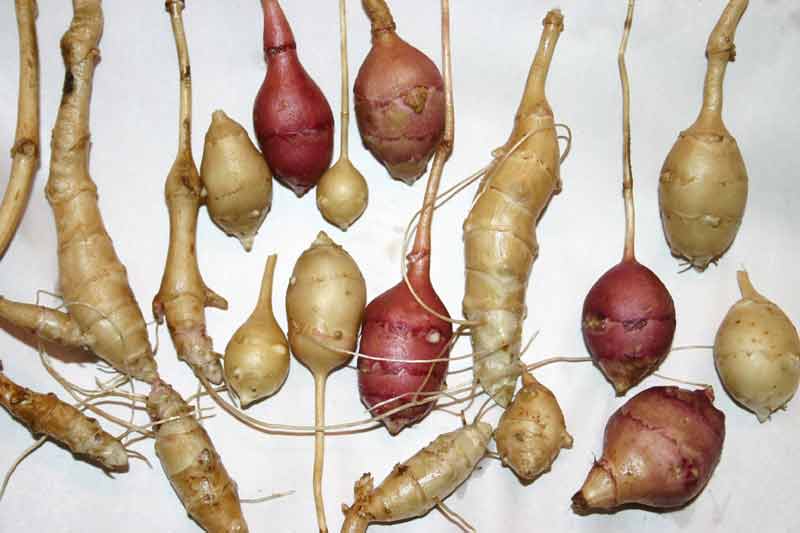
In the meantime, along with the field grown tubers, three hundred large grow bags took form and new varieties were named and old varieties were kept in an organized way not to mix the selections. This monumental task was accomplished over two years with major improvements done in the third and fourth years. With labor and materials, this was the single most expensive crop project I had ever undertaken at my farm. Was it worth it? No. It was not profitable. It had one of the most dreadful financial outcomes of any crop I have ever grown. Sales did increase but selling more of something doesn’t mean you are making a bigger profit. Based on the existing market value of this plant, it would not be worth doing again. Did it succeed? Absolutely! Yes. I was able to create a huge variety of a wild perennial vegetable while offering it in small packets to the retail consumer to a limited market. As a sidenote, if I could charge anything I wanted for them as a packet quantity, the price would have to be at least double what I was charging. The maintenance of the crop was quite high done in this manner. But it did work.
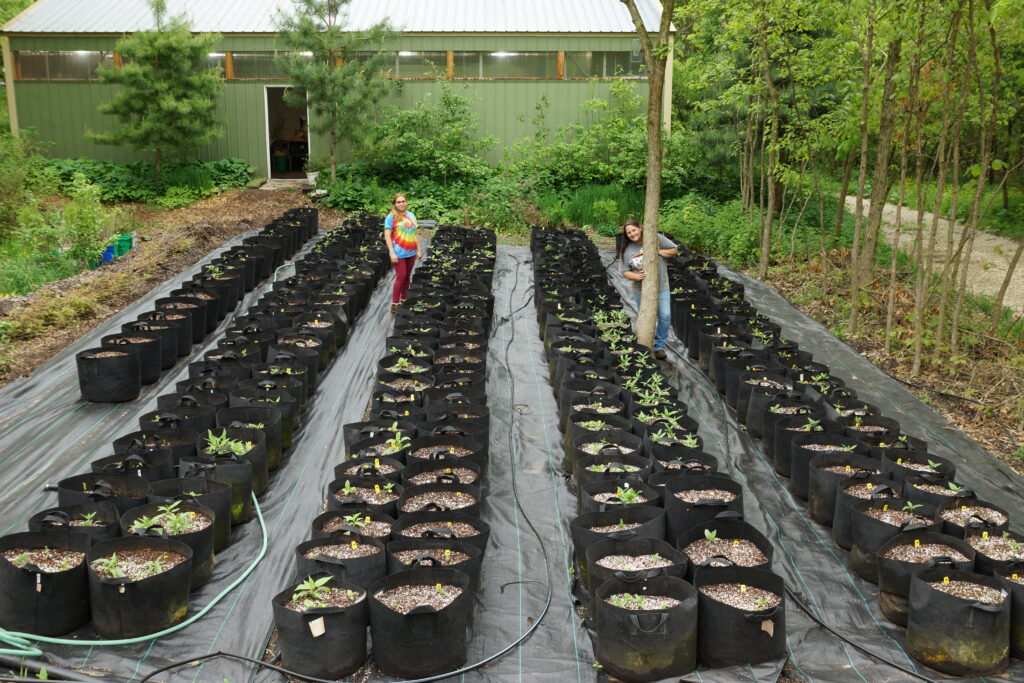
While visiting my brother in New York City, I noticed many vendors selling sunchokes. The price was reasonable.-maybe 3 to 4 dollars a half pound. The tubers looked so beautiful sitting stacked neatly in the sun. I could not tell what variety they may have been but to me it looked like Stampede. So it can be added to an existing line up of delicious vegetables in season and still be of value to consumers of the sunchoke. But consider this: even Frieda Foods who trademarked the name sunchoke and gave us the Kiwi, decades ago has given up on the mass market of them. I was happy to see others contacting me about the sunchoke and sending me pictures even though some appeared to be mixed already.
As time goes on and my collection is now completely gone, I wonder what is next for the sunchoke. Will it be the new energy crop? Will it find its way into the inulin rich crops used for digestive health? Will it be found as a companion garden plant again like its introduction from Johnny’s Seeds, Fedco and Thompson and Morgan. Or will it still remain in the club of exclusivity? Don’t ask me. I’m not the messiah.
Enjoy. Kenneth Asmus
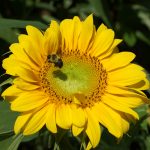
Post Script: I love the peanut butter cups. In the process of looking at the line up in the store yesterday, I noticed a new type on the market from EVOLVED with organic hazelnuts with no sugar added. When I brought it home and tried it, I read the ingredients. “organic Jerusalem artichoke fiber” was the third ingredient. aha! Sneak it in there!